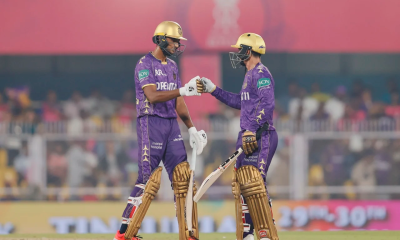Features
2020 Olympic Games: tales mostly of triumph
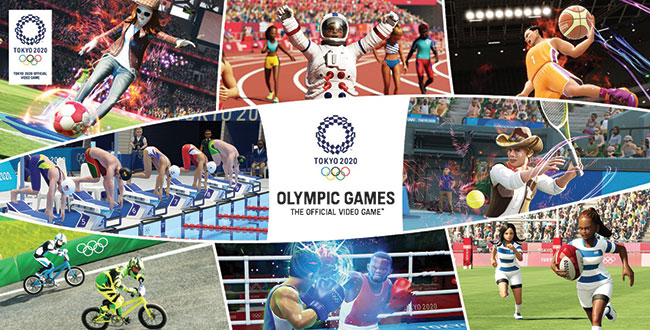
I watched on a sports channel and BBC snatches of the closing ceremony of the 2020 Olympic Games in Tokyo and the concurrent celebrations in Paris with President Macron atop the Eiffel Tower watching the fly past of planes emitting streams of white, blue and red fumes; and the French Flag waved around. France will host the 2024 Games in Paris and we do hope with none of the heartburn and doubts that surrounded the Tokyo games; plus criticism too.
Dousing the flame and handing over the flag
The bounced around questions and doubts for much more than a year were prefaced with would, could and should the Games be held. Even when postponed by more than one year, the questions and doubts and overcoming opposition gave headaches to the Olympic organizing team and to athletes around the world plus Covid 19 experts. But finally the Games did go ahead, in a bubble meant to separate it from Tokyo, minus spectators but inclusive of all thrills, a few spills, excitement and drawing world attention with the spectacular winning of golds, silvers and bronzes. A couple of records were broken.
Thus the glorious Olympic Games were held successfully, even though the cursed Covid 19 did invade the Village. They concluded on Sunday August 8 with the ceremonial handing of the Olympic flag to the next host France; accompanied by nostalgia, forged friendships and connections; living up to its motto: ‘Swifter, Higher, Stronger, Together’ and its creed of ‘The important thing in life is not victory but combat; it is not to have vanquished but to have fought well.’ Thomas Pesquet played the last line of the Olympic song on his saxophone from outer space! Two women played major roles here: Tokyo Governor – Yuniko Koike and Mayor of Paris – Anna Hidelgo.
Anthony Lane writing in the New Yorker dated 8/8/2021 noted: “Yet the Tokyo Olympics, though menaced by a gruelling degree of heat and humidity, did offer surprising relief. And all because of the kids.” That last because new competitions introduced this year – skateboarding, sport climbing, surfing had the debutantes, mostly very young, 13-year olds for instance skate boarding fearlessly. Just turned teenager, British Sky Brown was one of them who won gold in skateboarding, plus her giggles won the hearts of people who watched the games on TV.
 Lane adds: “There has been a different, more vulnerable dynamic to these Olympics, and the athletes have modeled a way through it – in part by being open about their individual struggles, and in part by leaning on one another. The enduring image of these Games, for me, won’t be of a winner wrapped in a flag but of American gymnast Simone Giles.” This superb gymnast withdrew from most of the competitions she had entered for having suffered ‘the twisties ‘ – high in the air, looking lost. “Having performed one and a half of the planned two and a half twists of her vault, she suddenly flung her arms open to stop her spinning. Her body torqued, her head going one way while her legs went another, and then pitched forward, stumbling and lunging into a landing. It would have felt strange to watch any gymnast vault so awkwardly, but it was especially shocking to see it from Biles, who, normally, has unparalleled body control, and an unerring sense of herself in the air.” She said she suffered emotionally if not mentally but came back on the last day to win bronze on the balance beam. Many others rallied round her and encouraged and empathized with her, emphasizing the fact that friendship and fellow feeling superseded sharp competition.
Lane adds: “There has been a different, more vulnerable dynamic to these Olympics, and the athletes have modeled a way through it – in part by being open about their individual struggles, and in part by leaning on one another. The enduring image of these Games, for me, won’t be of a winner wrapped in a flag but of American gymnast Simone Giles.” This superb gymnast withdrew from most of the competitions she had entered for having suffered ‘the twisties ‘ – high in the air, looking lost. “Having performed one and a half of the planned two and a half twists of her vault, she suddenly flung her arms open to stop her spinning. Her body torqued, her head going one way while her legs went another, and then pitched forward, stumbling and lunging into a landing. It would have felt strange to watch any gymnast vault so awkwardly, but it was especially shocking to see it from Biles, who, normally, has unparalleled body control, and an unerring sense of herself in the air.” She said she suffered emotionally if not mentally but came back on the last day to win bronze on the balance beam. Many others rallied round her and encouraged and empathized with her, emphasizing the fact that friendship and fellow feeling superseded sharp competition.
Most medals
Commentators say the first defining moment of the 2020 Tokyo Games was American star Allyson Felix winning her 10th gold medal – the most number of medals for a female track athlete. She also won bronze for the 4X400 m relay. This is Felix’s fifth Olympics having competed in 2004 Athens, 2008 Beijing, 2012 London and 2016 in Rio de Janeiro; winning gold at every Summer Olympics. “This one is very different, and it’s very special. And it just took a lot to get here,” she said. She now exceeds the record set by Jamaican athlete Merlene Ottey and equals Carl Lewis who holds the honour of most Olympic medals won by a U.S. track athlete. Lewis warmly congratulating her on Twitter said: “35 never looked so good.” The most touching scene for me was seeing her celebrate her gold with her little daughter of around three years in her arms, born prematurely.
Another impressive woman is Elaine Thompson Herah (29) from Jamaica, five times Olympian, who won the 100 and 200 m sprints but could not beat the record held by Florence Griffith Joyner of the US. However, she is the fastest woman in history having created a new record in 100m and won the 200m plus won gold in the 4X400 relay. Her husband is her coach.
Other noteworthies
Too many to mention here. However Tom Daly and Matt Lee created history with their synchronized diving. Listening to Daly after his win I thought I heard wrong when he referred to his husband and child. He did say ‘husband’ for he came out as gay in 2013 and is one among 142 LGBTQ athletes at these Games.
Amusing, yet heart strings-pulling, was the utter surprise registered on Norwegian Karsten Warholm’s face as he won the 400 m hurdles, outstripping his own world record by a distance. He rejoiced setting a new record by ripping open his vest! The 110 m hurdles was won by Jamaican Hansle Parchment arriving just in time in the stadium having gone to a wrong venue and being lent money to taxi to the correct place. Acclaimed by all was the sharing of the gold in the high jump very willingly and magnanimously by Qatar’s Barshin and Italy’s Tamberi.
The most touching story
The most heartwarming tale comes from India and the captain of its women’s hockey team, which went around as an email. Netherlands won gold, Argentina silver and GB bronze. However India’s women’s hockey team won hearts and praise beating Australia to reach the semi-finals but beaten by Britain.
The narrative centers on the caption Rani Rampal, 26, from the State of Haryana. Most of the players come from extreme poverty and started playing to support their families. They faced extreme opposition from within the conservative and tradition bound families since “Girls aren’t supposed to play sports, and that too in skirts!”
In an interview Rani said: “I wanted an escape from my life; from the electricity shortages, to the mosquitoes buzzing in our ear when we slept, from barely having two square meals to seeing our home getting flooded when it rained. My parents tried their best, but there was only so much they could do – Papa was a cart puller and Maa worked as a maid.”
She went to a hockey academy close to home but only watched others play at first. Her father could not afford fees and the trainer refused to have her saying she was not strong enough. She found a broken hockey stick and practiced, determined to prove she could wield the stick with dexterity and was taken on.
Her family firmly refused to let her play due to the tradition of girls being cooks, caretakers, dutiful daughters and then wives and mothers, but later her father relented.
At the academy, it was mandatory for each player to bring 500 ml of milk. Since her family could not afford this, she watered her milk portion. Her coach supported her fully and she trained hard and consistently. She earned her first salary of Rs 500 winning a State tournament and handed it over to her father who had never had such an amount in one go. Her aim was for the family to have a home of their own. She played for Haryana and then finally got the national call. There was no looking back from then on, becoming captain of the national team. She bought the family a home in 2017. We wish her luck.
I end with a quote culled from a foreign paper. “Only a fool would argue that the world of pandemic, of fire and flood, and of economic uncertainly was halted or healed by this year’s Olympic Games. Only a cynic however would deny that, for a fortnight, the darkness was put on hold. Faith in the future was restored.” I add by the competing athletes: their perseverance, strengths and weaknesses and the spirit of playing fair. 205 nations participated in the Tokyo Games with 339 events in 33 sports. And its motto seemed to be “United by emotions.” Yes, the heart was supreme above the body of physical strength and mind of determined competition.
Features
South’s ‘structural deficiencies’ and the onset of crippled growth
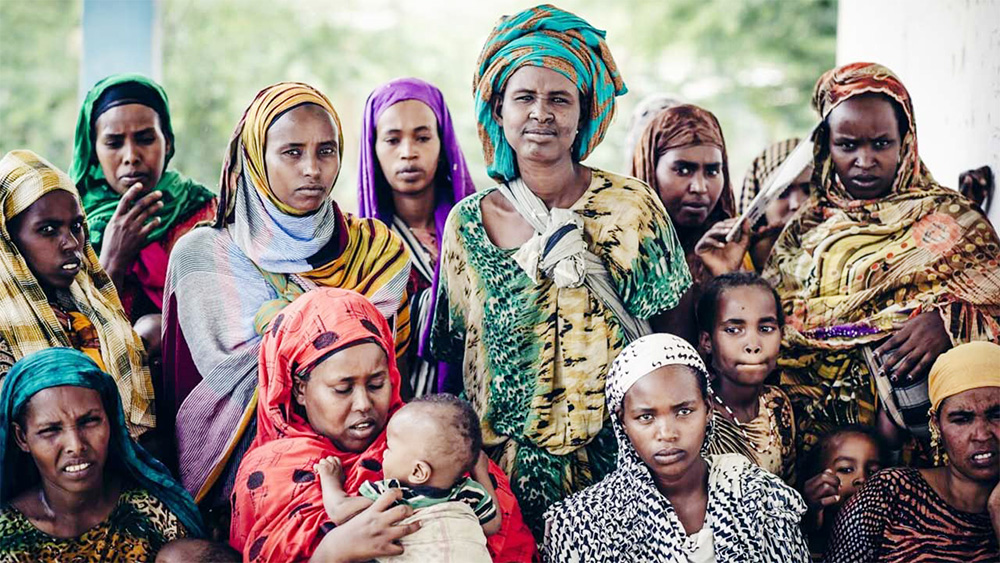
 The perceptive commentator seeking to make some sense of social and economic developments within most Southern countries today has no choice but to revisit, as it were, that classic on post-colonial societies, ‘The Wretched of the Earth’ by Frantz Fanon. Decades after the South’s initial decolonization experience this work by the Algerian political scientist of repute remains profoundly relevant.
The perceptive commentator seeking to make some sense of social and economic developments within most Southern countries today has no choice but to revisit, as it were, that classic on post-colonial societies, ‘The Wretched of the Earth’ by Frantz Fanon. Decades after the South’s initial decolonization experience this work by the Algerian political scientist of repute remains profoundly relevant.
The fact that the Algeria of today is seeking accountability from its former colonizer, France, for the injustices visited on it during the decades of colonial rule enhances the value and continuing topicality of Frantz’s thinking and findings. The fact that the majority of the people of most decolonized states are continuing to be disempowered and deprived of development should doubly underline the significance of ‘The Wretched of the Earth’ as a landmark in the discourse on Southern questions. The world would be erring badly if it dismisses this evergreen on decolonization and its pains as in any way outdated.
Developments in contemporary China help to throw into relief some of the internal ‘structural deficiencies’ that have come to characterize most Southern societies in current times. However, these and many more ‘structural faults’ came to the attention of the likes of Fanon decades back.
It is with considerable reservations on their truthfulness that a commentator would need to read reports from the US’ Office of the Director of National Intelligence (ODNI) on developments in China, but one cannot approach with the same skepticism revelations on China by well-known media institutions such as Bloomberg News.
While an ODNI report quoted in this newspaper on March 25th, 2025, elaborated on the vast wealth believed to have been amassed by China’s contemporary rulers and their families over the years, Bloomberg News in a more studied manner said in 2012, among other things, on the same subject that, ‘Xi’s extended family had amassed assets totaling approximately $376 million, encompassing investments in sectors like rare earth minerals and real estate. However, no direct links were established between these assets and Xi or his immediate family.’
Such processes that are said to have taken hold in China in post- Mao times in particular are more or less true of most former colonies of the South. A clear case in point is Sri Lanka. More than 75 years into ‘independence’ the latter is yet to bring to book those sections of its ruling class that have grown enormously rich on ill-gotten gains. It seems that, as matters stand, these sections would never be held accountable for their unbounded financial avarice.
The mentioned processes of exploitation of a country’s wealth, explain in considerable measure, the continuing underdevelopment of the South. However, Fanon foresaw all these ills and more about the South long ago. In ‘The Wretched of the Earth’ he speaks insightfully about the ruling classes of the decolonized world, who, having got into the boots of the departing colonizers, left no stone unturned to appropriate the wealth of their countries by devious means and thereby grow into the stratum described as ‘the stinking rich.’
This is another dimension to the process referred to as ‘the development of underdevelopment.’ The process could also be described as ‘How the Other Half Dies’. The latter is the title of another evergreen piece of research of the seventies on the South’s development debacles by reputed researcher Susan George.
Now that the Non-aligned Movement is receiving some attention locally it would be apt to revisit as it were these development debacles that are continuing to bedevil the South. Among other things, NAM emerged as a voice of the world’s poor. In fact in the seventies it was referred to as ‘The trade union of the poor.’ Accordingly, it had a strong developmental focus.
Besides the traditional aims of NAM, such as the need for the South to keep an ‘equidistance’ between the superpowers in the conduct of its affairs, the ruling strata of developing countries were also expected to deliver to their peoples equitable development. This was a foremost dimension in the liberation of the South. That is, economic growth needed to be accompanied by re-distributive justice. In the absence of these key conditions no development could be said to have occurred.
Basing ourselves on these yardsticks of development, it could be said that Southern rulers have failed their peoples right through these decades of decolonization. Those countries which have claimed to be socialistic or centrally planned should come in for the harshest criticism. Accordingly, a central aim of NAM has gone largely unachieved.
It does not follow from the foregoing that NAM has failed completely. It is just that those who have been charged with achieving NAM’s central aims have allowed the Movement to go into decline. All evidence points to the fact that they have allowed themselves to be carried away by the elusive charms of the market economy, which three decades ago, came to be favoured over central planning as an essential of development by the South’s ruling strata.
However, now with the returning to power in the US of Donald Trump and the political Right, the affairs of the South could, in a sense, be described as having come full circle. The downgrading of USAID, for instance, and the consequent scaling down of numerous forms of assistance to the South could be expected to aggravate the development ills of the hemisphere. For instance, the latter would need to brace for stepped-up unemployment, poverty and social discontent.
The South could be said to have arrived at a juncture where it would need to seek ways of collectively advancing its best interests once again with little or no dependence on external assistance. Now is the time for Southern organizations such as NAM to come to the forefront of the affairs of the South. Sheer necessity should compel the hemisphere to think and act collectively.
Accordingly, the possibility of South-South cooperation should be explored anew and the relevant institutional and policy framework needs to be created to take on the relevant challenges.
It is not the case that these challenges ceased to exist over the past few decades. Rather it is a case of these obligations being ignored by the South’s ruling strata in the belief that externally imposed solutions to the South’s development questions would prove successful. Besides, these classes were governed by self- interest.
It is pressure by the people that would enable their rulers to see the error of their ways. An obligation is cast on social democratic forces or the Centre-Left to come to center stage and take on this challenge of raising the political awareness of the people.
Features
Pilot error?

On the morning of 21 March, 2025, a Chinese-built K-8 jet trainer aircraft of the Sri Lanka Air Force (SLAF) crashed at Wariyapola. Fortunately, the two pilots ejected from the aircraft and parachuted down to safety.
A team of seven has been appointed to investigate the accident. Their task is to find the ‘cause behind the cause’, or the root cause. Ejecting from an aircraft usually has physical and psychological repercussions. The crew involved in the crash are the best witnesses, and they must be well rested and ready for the accident inquiry. It is vital that a non-punitive atmosphere must prevail. If the pilots believe that they are under threat of punishment, they will try to withhold vital information and not reveal the truth behind what happened, prompting their decision to abandon the stricken aircraft. In the interest of fairness, the crew must have a professional colleague to represent them at the Inquiry.
2000 years ago, the Roman philosopher Cicero said that “To err is human.” Alexander Pope said, “To err is human. To forgive, divine.” Yet in a Royal Air Force (RAF) hangar in the UK Force (RAF) hangs a sign declaring: “To err is human. To forgive is not RAF policy” These are the two extremes.
Over the years, behavioural scientists have observed that errors and intelligence are two sides of the same coin. In other words, an intelligent human being is liable to make errors. They went on to label these acts of omission and commission as ‘Slips, Lapses, Mistakes and Violations’.
To illustrate the point in a motoring context, if one was restricted to driving at a speed limit of 100 kph along an expressway and the speed crept up to 120 kph, then it is a ‘Slip’ on one’s part. If you forgot to fasten the seatbelt, it is a ‘Lapse’. While driving along a two-lane road, if a driver thinks in his/her judgement that the way is clear and tries to overtake slower traffic on the road, using the opposite lane, then encounters unanticipated opposite traffic and is forced to get back to the correct lane, that is a ‘Mistake’. Finally, if a double line is crossed while overtaking, while aware that the law is being broken, that is labelled as a ‘Violation’. In theory, all of the above could be applied to flying as well.
In the mid-Seventies, Elwyn Edwards and Frank Hawkins proposed that good interaction between Software (paperwork), Hardware (the aircraft and other machines), Liveware (human element) and the (working) environment are the essentials in safe flight operations. Labelled the ‘SHELL’ concept, it was adopted by the International Civil Aviation Organisation. (ICAO). (See Diagram 01)

In diagram 01, two ‘L’s depict the ‘Liveware’, inside and outside an aircraft flightdeck. The ‘L’ at the centre is the pilot in command (PIC), who should know his/her strengths and weaknesses, know the same of his/her crew, aircraft, and their mission, and, above all, be continuously evaluating the risks.
Finally, Prof. James Reason proposed the Swiss Cheese Theory of Accident Causation. (See Diagram 02)
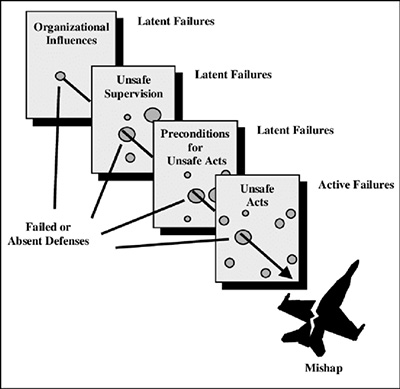
From this diagram we see that built in defences in a system are like slices of Swiss cheese. There are pre-existing holes at random which, unfortunately, may align and allow the crew at the ‘sharp end’ to carry out a procedure unchecked.
Although it is easy and self-satisfying to blame a crew, or an individual, at an official accident investigation, what should be asked, instead, is why or how the system failed them? Furthermore, a ‘just culture’ must prevail.
The PIC and crew are the last line of defence in air safety and accident prevention. (See Diagram 3)

A daily newspaper reported that it is now left to be seen whether the crash on 21 March was due to mechanical failure or pilot error. Why is it that when a judge makes a wrong judgement it is termed ‘Miscarriage of Justice’ or when a Surgeon loses a patient on the operating table it is ‘Surgical Misadventure’, but when a pilot makes an honest error, it is called ‘Pilot Error’? I believe it should be termed ‘Human Condition’.
Even before the accident investigation had started, on 23 March, 2025, Minister of Civil Aviation, Bimal Ratnayake, went on record saying that the Ministry of Defence had told him the accident was due to an ‘athweradda’ (error). This kind of premature declaration is a definite ‘no-no’ and breach of protocol. The Minister should not be pre-empting the accident enquiry’s findings and commenting on a subject not under his purview. Everyone concerned should wait for the accident report from the SLAF expert panel before commenting.
God bless the PIC and crew!
– Ad Astrian
Features
Thai scene … in Colombo!
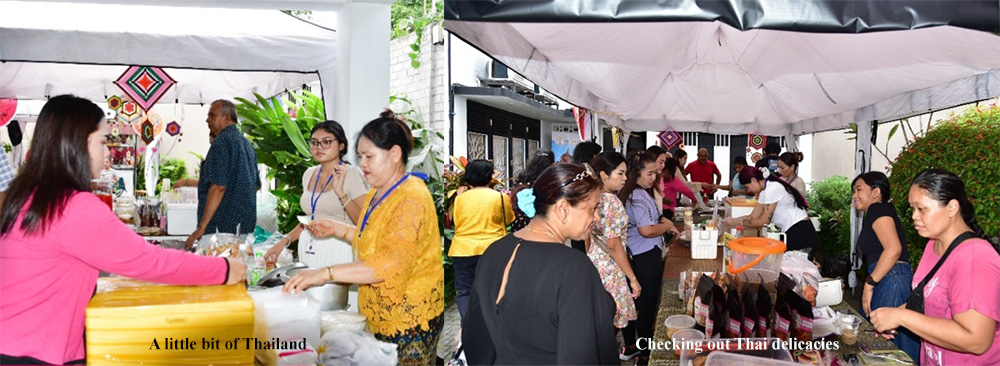
 Yes, it’s happening tomorrow, Friday (28th), and Saturday (29th,) and what makes this scene extra special is that you don’t need to rush and pack your travelling bags and fork out a tidy sum for your airfare to Thailand.
Yes, it’s happening tomorrow, Friday (28th), and Saturday (29th,) and what makes this scene extra special is that you don’t need to rush and pack your travelling bags and fork out a tidy sum for your airfare to Thailand.
The Thai Street Food Festival, taking place at Siam Nivasa, 43, Dr. CWW Kannangara Mawatha, Colombo 7, will not only give you a taste of Thai delicacies but also Thai culture, Thai music, and Thai dancing.
 This event is being organised by the Thai Community, in Sri Lanka, in collaboration with the Royal Thai Embassy in Colombo.
This event is being organised by the Thai Community, in Sri Lanka, in collaboration with the Royal Thai Embassy in Colombo.
The Thai Community has been very active and they make every effort to promote Amazing Thailand, to Sri Lankans, in every possible way they can.
Regarding the happening, taking place tomorrow, and on Saturday, they say they are thrilled to give Sri Lankans the vibrant Thai Street Food Festival.
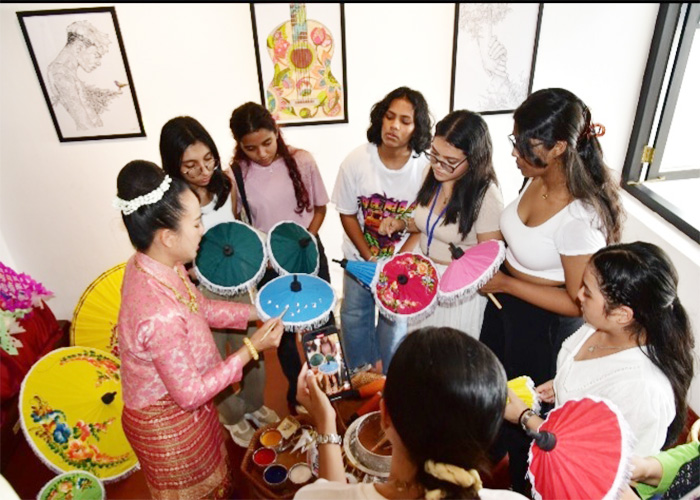
Explaining how Thai souvenirs are turned out
I’m told that his event is part of a series of activities, put together by the Royal Thai Embassy, to commemorate 70 years of diplomatic relations between Thailand and Sri Lanka.
At the Thai Street Food Festival, starting at 5.00 pm., you could immerse yourself in lively Thai culture, savour delicious Thai dishes, prepared by Colombo’s top-notch restaurants, enjoy live music, captivate dance performances, and explore Thai Community members offering a feast of food and beverages … all connected with Amazing Thailand.

Some of the EXCO members of the Thai Community, in Sri Lanka,
with the Ambassador for Thailand
I’m sure most of my readers would have been to Thailand (I’ve been there 24 times) and experienced what Amazing Thailand has to offer visitors … cultural richness, culinary delights and unique experiences.
Well, if you haven’t been to Thailand, as yet, this is the opportunity for you to experience a little bit of Thailand … right here in Colombo; and for those who have experienced the real Thailand, the Thai Street Food Festival will bring back those happy times … all over again!
Remember, ENTRANCE IS FREE.
-

 Business6 days ago
Business6 days agoCargoserv Shipping partners Prima Ceylon & onboards Nestlé Lanka for landmark rail logistics initiative
-
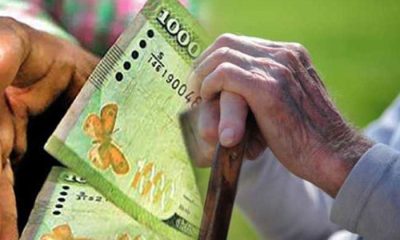
 News4 days ago
News4 days agoSeniors welcome three percent increase in deposit rates
-

 Features4 days ago
Features4 days agoThe US, Israel, Palestine, and Mahmoud Khalil
-

 Business6 days ago
Business6 days agoSri Lankans Vote Dialog as the Telecommunication Brand and Service Brand of the Year
-
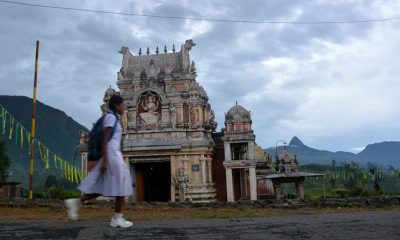
 News4 days ago
News4 days agoScholarships for children of estate workers now open
-
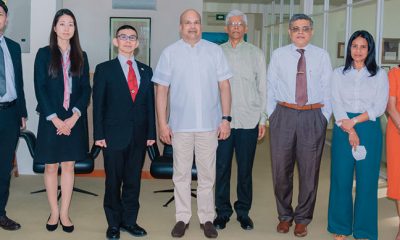
 News5 days ago
News5 days agoDefence Ministry of Japan Delegation visits Pathfinder Foundation
-

 Features6 days ago
Features6 days agoThe Vaping Veil: Unmasking the dangers of E-Cigarettes
-
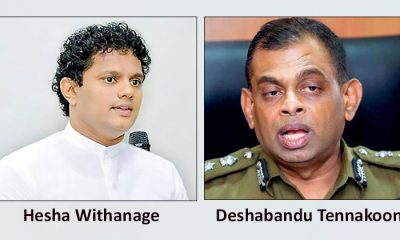
 News6 days ago
News6 days ago‘Deshabandu is on SLC payroll’; Hesha tables documents








